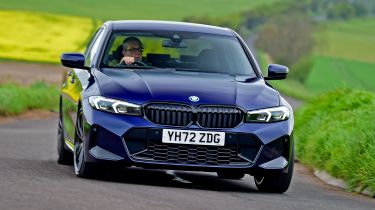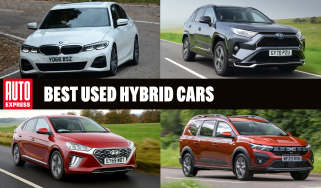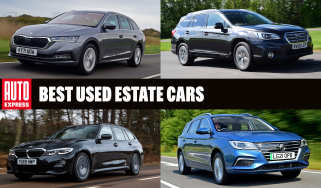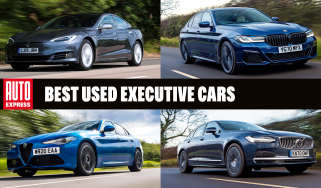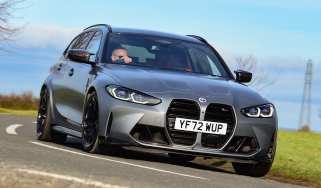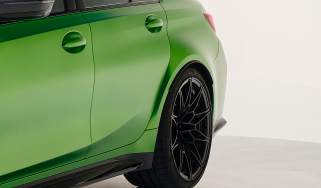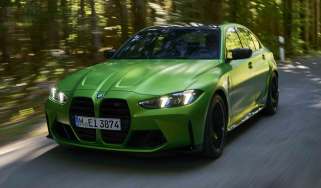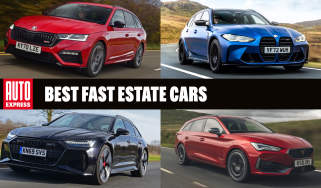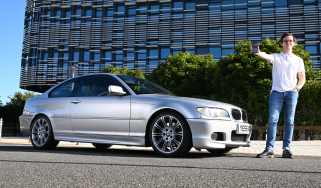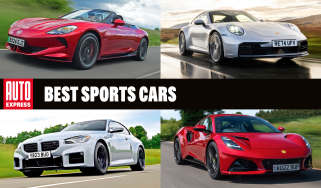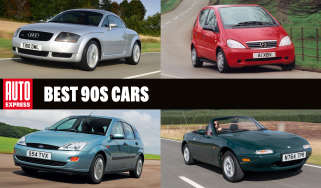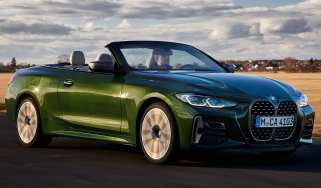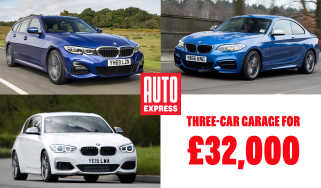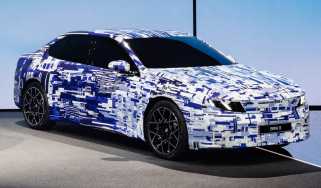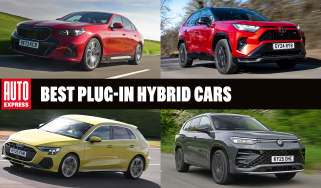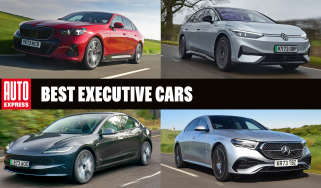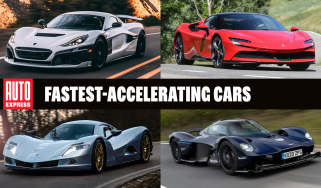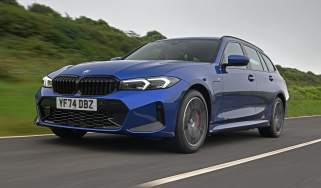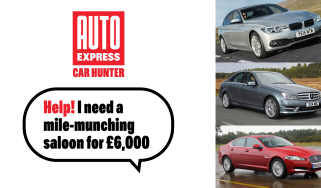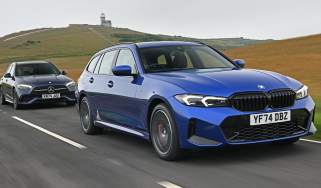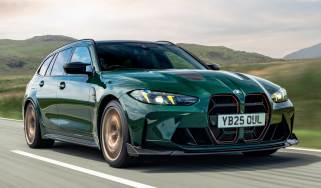BMW 3 Series review: a great car, but electric rivals are closing the gap
The BMW 3 Series offers fine performance, driving dynamics, technology and refinement, but electric rivals are catching up

The 3 Series has always been great to drive, offering engaging handling and sure-footed road holding. The latest model retains its driver appeal, punchy performance and impressive frugality, but has added a more luxurious driving experience, more interior space and an impressive array of technology to its arsenal.
While prices have risen a little since the previous generation, standard equipment is significantly higher. The updated styling is a conservative evolution of what’s gone before it, but with a stronger, lighter body the car’s refinement has improved too.
With its class-leading blend of performance and economy, the 3 Series went straight to the top of the compact executive class when it launched, and a facelift in 2022 only strengthened its hand.
About the BMW 3 Series
When BMW first launched the 3 Series 45 years ago, it had the junior executive market more or less to itself. But over the years key rivals such as the Audi A4 and Mercedes C-Class have played catch up. Plus, there’s the Jaguar XE and Alfa Romeo Giulia to consider, along with upmarket family cars like the Skoda Superb, Volkswagen Arteon, and Peugeot 508. And let’s not forget the all-electric threat of the Tesla Model 3, which is offering company car buyers some very favourable tax rates and blisteringly quick performance.
Used - available now

2022 BMW
3 Series
4,000 milesAutomaticPetrol2.0L
Cash £24,475
2022 BMW
3 Series
36,794 milesAutomaticPetrol2.0L
Cash £23,147
2020 BMW
3 Series
35,920 milesAutomaticPetrol2.0L
Cash £20,845
2020 BMW
3 Series
62,518 milesAutomaticDiesel2.0L
Cash £20,600In spite of ever-increasing competition, the BMW 3 Series is a phenomenally successful model, with its six previous incarnations having sold over 15 million examples. The arrival of the seventh-generation G20 model in 2019 was the latest step in this important lineage.
In replacing its best-selling executive saloon, BMW managed to retain the previous model’s driver appeal while making improvements in interior space, cabin quality and cutting-edge technology. A refresh in 2022 introduced reworked styling inside and out – taking inspiration from the larger BMW 5 Series, with slimmed-down headlights and a larger and more aggressive lower grille for the popular M Sport trim.
The interior now features BMW’s ‘Curved Display’, with an instrument and infotainment panel that appears seamless and sits perched atop the dashboard, running BMW’s latest OS 8 software.
BMW has offered a wide range of engines in the 3 Series in the past, but those choices were slimmed down as part of the updates we’ve already mentioned. Gone are the 154bhp 318i, 254bhp 330i, 148bhp 318d, 282bhp 330d, and the four-wheel drive option for the 320i and 320d, to be replaced with a 182bhp 320i, a 187bhp 320d (with some 48v mild-hybrid tech), a 369bhp straight-six M340i xDrive, and a 335bhp high-performance M340d xDrive with a muscular 700Nm of torque.
For company car drivers, there’s a plug-in hybrid 330e. It uses the same 2.0-litre turbocharged petrol engine as the 320i, but also adds an electric motor for a combined output of 288bhp. BMW claims its 3 Series PHEV can travel up to 38.5 miles purely on electric power, and it can also be equipped with either rear or four-wheel drive.
Two trim levels are available throughout the 3 Series range – Sport and M Sport. All cars are well appointed with sat nav, LED headlights, three-zone air conditioning, cruise control, Apple CarPlay, Android Auto and heated seats, as well as BMW’s Live Cockpit Plus with Curved Display. BMW’s new Intelligent Personal Assistant is also included, allowing you to operate many of the car’s functions via voice control.
The popular M Sport trim has always been the favoured choice in the UK with its more aggressive M Sport bodykit. The range-topping M340d and M340i high-performance versions go further still with 19-inch alloy wheels, unique trim detailing, upgraded brakes and sports suspension.
Engines, performance and drive
The BMW 3 Series has long been the default choice for those looking for an entertaining driving experience from their compact executive saloon. And for the most part, this latest incarnation of the 3 Series retains its crown as being the drivers’ car in the class. However, BMW has also attempted to increase refinement and ride quality to match the Mercedes C-Class. It’s a tough job to retain the 3 Series’ sporting appeal while also raising the bar in the comfort stakes.
Remarkably, BMW seems to have pulled it off, as the 3 Series is still a very entertaining car to drive, with impressive road holding and improved ride quality over its predecessor. Part of this improvement is thanks to BMW’s new stroke-dependent suspension damper technology, which is a standard feature on all models. When the car is carrying a light load, the damping rate is softer, resulting in a compliant ride.
However, when the car is fully laden with passengers and luggage, the damping is stiffer to take into account the heavier load, which results in appreciably better body control without unduly affecting the ride quality. For the most part, it works very well, but part of the improvement in the 3 Series’ ability is also the result of using BMW’s latest CLAR platform. This has reduced weight – by up to 55kg – and increased body rigidity by up to 50 per cent. It’s an impressive feat given the 3 Series is larger than its predecessor.
On the motorway, the 3 Series is an accomplished cruiser, offering lower noise levels than it exhibited previously, partly thanks to the standard fit acoustic glazing. The ride is good too, and while in the past we might have recommended the optional adaptive dampers that can be specified as part of the M Sport Pro pack on M Sport cars, this is no longer necessary thanks to the stroke-dependent dampers. On the largest wheels, there is an occasional thump from the worst potholes, but it’s certainly no worse than its rivals in this respect.
The 3 Series lives up to the driver appeal expected of the model with excellent poise and agility, comfortably beating both the Audi A4 and Mercedes C-Class in this respect. But like its rivals, it does suffer from having slightly lifeless steering that doesn’t offer keen drivers a huge amount of feedback. Despite this, the 3 Series is still a drivers’ car with excellent grip and composure. And while the steering rack lacks feel, it is quick, allowing accurate and rapid corrections to your cornering line. This can be improved by opting for one of the models with BMW’s xDrive four-wheel drive system, which makes the 3 Series even more surefooted no matter the conditions.
Range rationalisation means the six-speed manual has been dropped, and all models now come with an eight-speed ZF automatic. That’s not a major issue in our view because the automatic is an excellent transmission with smooth changes whether the gearbox is left to its own devices or if you change gear manually using the standard steering wheel-mounted paddles.
Keener drivers who don't want to spend over £80,000 on a brand new BMW M3 will be best served by either the M340d or M340i. Both are effortlessly fast and – thanks to standard xDrive four-wheel drive – have loads of grip and traction.
However, it's best to consider this pair as fast, capable cruisers, because they're good to drive but don't feel much different to M Sport models. Adaptive suspension is standard on the M340d and M340i, making for great ride quality if Comfort mode is selected. Things sharpen up in Sport, and while some may find it a little uncomfortable, it offers a marked improvement in dynamics on the right piece of road.
0-62mph acceleration and top speed
The petrol range kicks off with the 182bhp 2.0-litre four-cylinder 320i, which can only be specified with rear-wheel drive (it used to have the option of xDrive four-wheel drive). It manages the 0-62mph run in 7.4 seconds and has a top speed of 146mph.
The plug-in hybrid 330e mixes a 2.0-litre four-cylinder turbocharged petrol engine with an electric motor for a total output of 288bhp and 420Nm; enough for 0-62mph in 5.8 seconds, and a top speed of 143mph in both rear-wheel drive and xDrive four-wheel drive forms. Meanwhile, the sporty M340i has a 3.0-litre straight-six with 369bhp and four-wheel-drive as standard. The 0-62mph dash takes just 4.4 seconds, and it’s limited to 155mph.
The 320d uses a four-cylinder, 2.0-litre diesel engine producing 187bhp. Like the 320i petrol, it comes with an eight-speed automatic and is rear-wheel drive only. It can get from 0-62mph in 6.9 seconds, and has a top speed of 149mph.
Performance-conscious diesel buyers after a straight-six engine must now pay for the M340d xDrive since the demise of the rather excellent (in our opinion) 330d. Still, the 335bhp of this top-of-the-range diesel produces plenty of performance to help us forget the lesser 330d. It can dispatch the sprint in 4.6 seconds, and keeps going up to 155mph.
MPG, CO2 and running costs
The latest 3 Series offers decent economy across the board, and CO2 emissions are relatively low – good news for private buyers and company car users. All quoted figures here are for the saloon – Touring estate buyers should factor in a slight dip in fuel economy and an increase in emissions because of the extra weight of its estate car body.
The 320d Sport is the most economical non-plug-in hybrid choice, with a claimed overall figure of 58.9mpg and CO2 emissions of 127g/km. Those seeking even more grunt won't be left with horrendous running costs because M340d xDrive manages to combine a 335bhp output with an outstanding 46.3mpg on the combined cycle, and emissions of 159g/km.
The most efficient of the petrol engines is the 320i Sport with a claimed 43.5mpg and 147g/km of CO2. The M340i, on the other hand, is the least efficient model in the range, with a claimed best of 34.9mpg on the combined cycle, and CO2 emissions of 182g/km.
The plug-in hybrid 330e is capable of travelling short distances without using any fuel – its 12kWh (11.15kWh useable) battery pack will provide up to 38.5 miles of electric range when fully charged. The 330e Sport has an impressive 217.3mpg maximum claimed economy and CO2 emissions as low as 30g/km – though you’ll be hard-pressed to match these figures in real-world driving.
It’s definitely the best choice in the 3 Series range for company car drivers because of its relatively low Benefit-in-Kind (BiK) tax rates, but there are a number of alternatives that’ll be even more affordable to run, including the Mercedes C300e with up to 68 miles of electric range, or the all-electric Tesla Model 3, which sits in a low 2 per cent BIK band – at least until 2025.
Charging the 330e will take a little under four hours using a wallbox charger at home. It’ll only accept 3.7kW, which is a little behind the times when most plug-in hybrids can accept a charging rate of 7.4kW.
Insurance
Insurance groups for the 3 Series saloon and Touring models are competitive and range from 29 for the 320i in both Sport and M Sport trims, to group 42 for the M340d xDrive. As to be expected, the high-performance M3 sits in the highest insurance groups, with the hardcore M3 CS being the priciest in group 46.
Still, that’s better than the Tesla Model 3, which sits in the highest insurance group of 50, mainly due to its lightning-quick performance.
Check your tax status and renewal date in seconds. Check your VED car tax now...
Depreciation
Thanks to the lure of the premium badge, the BMW 3 Series has never suffered from terrible rates of depreciation, but as with the C-Class and the Audi A4, the sheer number of these premium models being sold each year has ultimately had a slight softening effect on their residual values.
The average retained value for the range after three years and 36,000 miles is around 50 per cent, with the strongest performer being the 320i petrol M Sport at 53 per cent, and the worst the 330e xDrive Sport at 45 per cent. The latter is probably due to company car drivers desiring the cheaper running costs of the Mercedes C300e plug-in hybrid, or the all-electric Tesla Model 3.
To get an accurate valuation on a specific model check out our free car valuation tool.
Interior, design and technology
The 3 Series is based on BMW’s CLAR (short for Cluster Architecture) platform first introduced on the flagship 7 Series in 2015, and is also used for the 5 Series executive saloon. The car is available as a four-door saloon and a five-door estate, badged 3 Series Touring.
The latest car features an interior that feels like that of the 5 Series and 7 Series. That’s no bad thing, because both those cars have an excellent, high-quality feel to them. The 3 Series has a more driver-centric feel to it than the Audi A4 and is less fussy and more straightforward than the dashboard used in the Mercedes C-Class.
The dashboard design works seamlessly with the new technology on board, which saw a big change with the facelift, thanks to the introduction of BMW’s ‘Curved Display’. This looks like a single ‘floating’ screen, but is in fact a 12.3-inch driver’s instrument panel and 14.9-inch touchscreen in a wide-screen format, running the latest OS 8 software.
Like most rivals, the 3 Series also has a concierge-style ‘Intelligent Personal Assistant’, a voice-controlled set-up that allows you to communicate with the car as you would with Apple’s Siri or Amazon’s Alexa. Thus, you can adjust the temperature, change the audio settings or talk to the sat nav, among other things. Adjusting the climate control is especially pertinent now the physical controls have been consigned to the touchscreen. If you prefer, you can still use the iDrive controller, which is intuitive and easy to use.
Also now standard is BMW’s Live Cockpit Professional set-up, which includes a 12.3-inch digital dashboard display that allows you to fully customise the information displayed.
The G20 3 Series is instantly recognisable as belonging to the BMW family, but it does seem to be a somewhat evolutionary design. And while the car’s looks are obviously subjective, we feel it’s a little bland from some angles. From the front, it’s instantly recognisable as a BMW with its trademark headlights (LED throughout the 3 Series range) and the kidney grilles remain, but from the rear, it’s perhaps less recognisable as a BMW.
Sat-nav, stereo and infotainment
Gone are the days when a 3 Series didn’t even come with a stereo or speakers, as all models are now packed with an array of hi-tech equipment along with USB charging points.
A DAB radio comes as standard, as does three years of free satellite navigation and connected services, which gives you access to BMW Apps informing you about live weather and traffic reports. Apple CarPlay and Android Auto smartphone connectivity are also standard across the 3 Series range, while the car's Emergency Call system will automatically call the emergency services in the event of a collision.
The stereo, along with many other functions, can be accessed by using the central control display as a touchscreen, as well as via voice commands, or by using the iDrive controller. While it can seem a little bewildering at a glance, those coming from a previous generation 3 Series will have no trouble operating the system, and it soon all becomes second nature once you’ve gotten the hang of it.
Unfortunately, some physical buttons for the climate control and the heated seats have migrated to the touchscreen, which we find is more distracting to use on the move than before. The Audi A4 retains its knurled rotary air-con dials, which are far easier to get on with and provide a quality feel.
Other criticisms surround the reversing camera, which rotates with the steering lock, and makes it hard to figure out when you’re aligned with a parking space. The digital dials work well enough, but the graphics look a bit fussy, and it isn’t as configurable as the virtual cockpit found on the A4
Practicality, comfort and boot space
The 3 Series is bigger than it was before, and the main focus for BMW has been on improving accommodation for those in the back. As a result, it now offers a similar amount of space as the Audi A4 and the Mercedes C-Class. BMW says the 3 Series is now wide enough to accommodate three child seats side by side in the rear, but only the two outside positions come with Isofix points.
Both front seat occupants should be able to find a comfortable position with a good range of seat adjustment and a steering wheel that’s adjustable for height and rake. The standard upholstery included with the Sport trim is BMW’s ‘Sensatec’ upholstery, which is a vegan-friendly alternative to leather. Moving up to M Sport adds in part-Alcantara upholstery, along with the option of genuine leather.
Dimensions and size
As with most new cars, the 3 Series has grown in comparison with its predecessor. It is now 4,709mm long (up by 85mm), 16mm wider (at 1,827mm) and a scant 1mm taller. The Mercedes C-Class is a touch shorter by 23mm while the Audi A4 is longer at 4,738mm. The Audi is 13mm wider and the Mercedes is 17mm narrower – as near as makes no difference.
What has changed significantly for the BMW 3 Series is that its wheelbase has been extended by 41mm, giving rear passengers more leg room. Indeed, it now has the longest wheelbase of the three cars. However, the Model 3 has a slightly longer wheelbase, helping to make it feel a little more roomy inside.
Leg room, head room and passenger space
If the 3 Series had previously been a little tight in the rear for three passengers, it now offers a decent amount of legroom. That’s thanks to the increase in wheelbase, but if three adults are carried in the rear, the middle seat passenger might feel a little hard done by as the middle seat base is firm and has little room for your feet thanks to the transmission tunnel – something that doesn’t exist in the Tesla Model 3 with its completely flat floor.
There should be no complaints on the amount of headroom though, because the 3 Series offers a few millimetres more than either the Audi A4 or Mercedes C-Class. There’s plenty of room for storing oddments too, with decently sized door pockets.
The driver and front seat passenger fare very well with comfortable and supportive seats. One slight disappointment is that lumbar support is an option rather than a standard feature, but this can be added for as a reasonably priced single extra, or as part of the Comfort Pack. Unfortunately, you will have to pay more for the pricey Comfort Plus Pack to get front-seat memory settings, a feature that comes as standard with the Model 3.
Boot space
While the 3 Series has grown in size, the same cannot be said of its boot, which stays at 480 litres – the same as the previous generation model. It should be more than adequate for most buyers without being class-leading. The Audi A4 has an identically sized boot, but the C-Class falls a little short of its rivals with a 455-litre capacity. Then there is the Tesla Model 3, which not only has a large boot with a sizable underfloor storage area, but also a front boot big enough for another carry-on bag. Added together, it makes the Model 3 much more practical.
As standard, the 3 Series has 40:20:40 split folding rear seats that improve its practicality, along with some handy nets in the boot compartment to stop small items rolling around. An electrically operated boot lid is available as part of the Comfort Pack, allowing the lid to be opened by swiping your foot under the rear bumper.
Reliability and safety
BMW has slipped in our reliability rankings, down from 16th in our 2022 Driver Power customer satisfaction survey to 21st out of 32 manufacturers in 2023. That shows there’s some room for improvement, especially when Tesla managed to get 3rd place overall.
The 3 Series finished in 46th place out of 75 cars in the Driver Power best cars to own poll. That’s not a bad result, but again, it was beaten by the Tesla Model 3, which came higher in 22nd place.
Euro NCAP put the seventh-generation 3 Series through a rigorous safety testing procedure in 2019 and awarded it a full five stars. It scored higher in adult, child occupant, and vulnerable road user categories than the Tesla Model 3, but the Model 3 was well ahead of the 3 Series for autonomous safety technology.
Additional safety systems come under what BMW terms Active Guard Plus. This includes speed limit information to warn you about the limit on the road you’re driving on, lane departure warning to let you know if you are straying out of your lane, a collision and pedestrian warning system with a city brake function to put the brakes on if it thinks you’re going to hit something to either avoid or mitigate a collision, and cruise control with a speed limiter function. A BMW Emergency Call service is offered as standard, which can alert the emergency services in the event of a collision.
For a more comprehensive suite of safety systems, buyers can add the Driving Assistant Professional package for around £2,200. This includes adaptive cruise control to keep you a safe distance from the vehicle in front, a steering assistant to help keep you in the middle of your lane on the motorway and a lane-keeping assist system to not only keep you within your lane, but also intervene if you’re about to collide with a vehicle travelling alongside you in your blindspot. There’s a wrong-way warning system that detects ‘wrong way’ signs if you happen to drive down a road in the wrong direction, and a cross-traffic alert system to warn you of vehicles crossing your path when reversing or entering a main road from a junction.
Warranty
BMW offers a three-year unlimited mileage warranty on the 3 Series, and this also includes a three-year subscription to the BMW Emergency breakdown service. This is broadly similar to the warranty offered by Mercedes, but better than the 60,000 mile limit favoured by Audi. The BMW warranty can be extended after the initial three-year period with either monthly or annual payments and differing levels of cover.
BMW’s paintwork warranty lasts for three years, while its anti-corrosion warranty is 12 years in duration.
Servicing
Your 3 Series will indicate to you when it requires servicing using a countdown timer in miles and days. You can purchase a BMW Service Inclusive plan with your new car, either paying upfront to cover you for the first five years or 62,000 miles, or opting for a BMW Pay Monthly Service Plan over three years, with prices for the 3 Series starting from around £26 per month.
Used and nearly new BMW 3 Series
The BMW 3 Series is considered one of the best compact executive cars on the market, and buyers looking for a used model will find many examples up for sale at dealerships and specialist outlets. With a history dating back to 1975, many early cars are now considered classics and command high prices. If you're in the market for an older model, it's worth consulting with an expert and doing lots of research before you part with your cash.
Those seeking more modern machinery will have the choice of saloon, estate, coupe and convertible models, while the 3 Series GT five-door hatchback offers a more niche option. It may not be the class leader for practicality, but the 3 Series offers enough options for family life, while keen drivers will be happy with a great handling car and the choice of some outstanding petrol and diesel engines.
BMW 3 Series history

BMW 3 Series F30 Mk6: 2012-2018
A well-looked-after Mk6 BMW 3 Series should make a great used buy; comfortable, well-equipped and good to drive, the F30 range also offered powerful, efficient engines in petrol, diesel and plug-in hybrid form. Cars produced after July 2015 received a facelift, with sharper exterior styling and the introduction of LED headlights, along with BMW's iDrive system being fitted as standard on all models.
If you're after plug-in hybrid power, you'll be looking at a post-2016 car. Sport, Modern, and Luxury trim levels offer a slightly different look from the ubiquitous M Sport-spec versions. The Mk6 3 Series had six manufacturer recall notices during its lifetime, so be sure to check all remedial work has been done before you buy. Read our full Mk6 BMW 3 Series buyer’s guide here…
